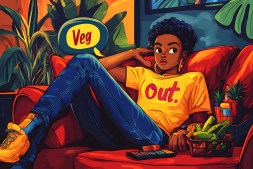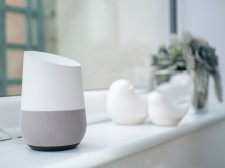Warm vs. Cool Colors: Choosing the Right Palette for Marketing Materials

SUMMARY Choosing between warm and cool colors plays a crucial role in how your brand is perceived and how your message connects with your audience. Warm colors like red and orange evoke energy and excitement, making them great for attention-grabbing campaigns, while cool colors like blue and green convey trust and calmness, ideal for professional or wellness-focused brands. By aligning your color palette with your brand personality and balancing warm and cool tones thoughtfully, you can create more impactful and emotionally resonant marketing materials.
Choosing the right color palette for your marketing materials can significantly impact how your brand is perceived and how effectively your message is communicated. Understanding the difference between warm and cool colors is essential for creating designs that resonate with your target audience.
What Are Warm Colors?
Warm colors typically include hues like red, orange, yellow, and variations thereof. These colors evoke feelings of warmth, energy, enthusiasm, and passion. They often grab attention quickly and are associated with excitement and positivity.
What Are Cool Colors?
Cool colors encompass shades such as blue, green, purple, and their tints. These tones tend to evoke calmness, trustworthiness, serenity, and professionalism. They are commonly used to create a sense of relaxation or reliability in marketing materials.
Impact of Warm vs. Cool Colors in Marketing
Using warm colors in marketing can stimulate emotions that prompt immediate action or excitement—ideal for promotions or sales events. Conversely, cool colors help build trust and convey stability; they work well for brands focused on professionalism or wellness sectors.
Choosing the Right Palette Based on Brand Personality
Your brand personality should guide whether you lean toward warm or cool colors. For example, a vibrant food brand might benefit from warm reds and oranges to stimulate appetite and enthusiasm. Meanwhile, a financial services company may choose cool blues to inspire confidence and security.
Tips for Combining Warm and Cool Colors Effectively
Balancing warm and cool colors can create visually appealing contrasts while maintaining harmony in design. Use warm accents against a predominantly cool background to highlight key information or calls to action without overwhelming viewers.
Understanding how warm versus cool colors influence perception enables marketers to craft more effective visual communications that align with their brand’s goals. By thoughtfully selecting color palettes that reflect the desired emotional response from your audience, you can enhance engagement and drive successful outcomes.
This text was generated using a large language model, and select text has been reviewed and moderated for purposes such as readability.











